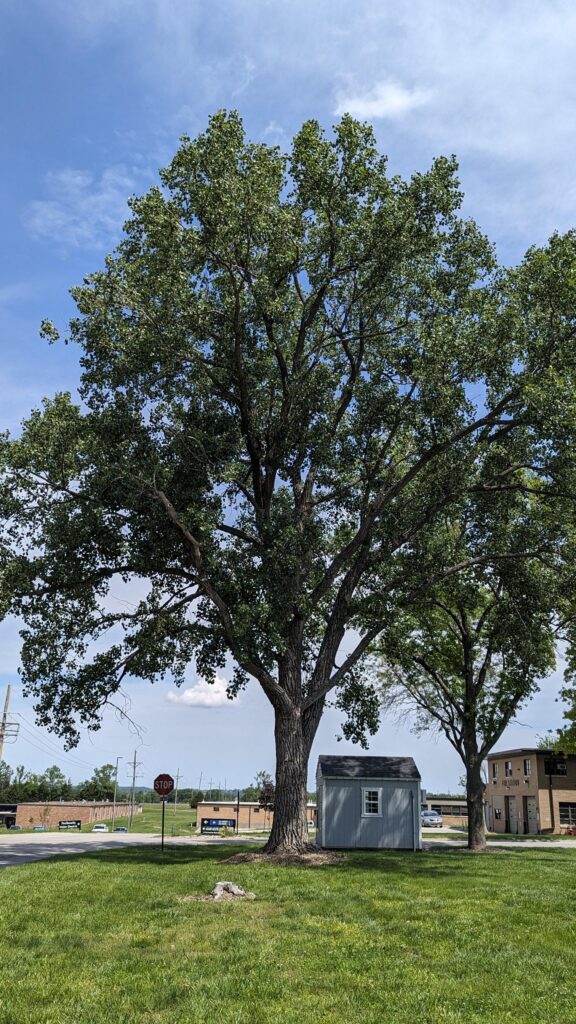
Eastern Cottonwood
Populus deltoides
There is always Music amongst the trees in the Garden, but our hearts must be very quiet to hear it.
Minnie Aumonier
Many Native American cultures share a story of how the cottonwoods came to the prairie. According to Native American storyteller Mary Louise Defender Wilson, a curious little star hid in the cottonwood tree so it could always be near the people on earth and listen to their beautiful music…the laughter and kind words they share with one another!1 The five pointed stars can be found by snapping the small dry twigs which fall from a cottonwood tree.2
Few sights were more welcome to America’s early pioneers than the cottonwood. This tree, more than any other, played a vital role in the success of the Lewis and Clark Expedition. The tree provided food for livestock, shade for the explorers, fuel for heating and cooking, and timber for constructing dwellings. The trunks were used to make dugout canoes, and the tree’s bark was used to produce both forage for horses and a bitter medicinal tea.3 Native Americans used the cottonwood to make lodge poles and to start fires. The shape of the teepee is thought to be fashioned after the shape of the cottonwood leaf after a Native American twisted a cottonwood leaf around his finger, to form a miniature teepee.4
Cottonwoods can live 80 to 100 years. The natural habitat for this tree is along stream beds, rivers, and lowlands.5 Its glossy green leaves produce a soft rustling sound in any breeze. As the tree matures its bark will become dark gray and develop deep ridges.
The eastern cottonwood produces catkins, which are slim drooping clusters of yellow flowers that emerge before the leaves in early spring. Later, seed capsules burst open, scattering millions of seeds attached to white fluffy hairs resembling cotton.
Cottonwoods provide shelter and food to many animals. Beaver eat the bark, leaves, and buds, deer eat the twigs and leaves.6 Many birds and butterflies enjoy the tree and it is a larval host for Viceroy and Tiger Swallowtail butterflies.7
The scientific name for the eastern cottonwood is Populus deltoides. Populus refers to the genus poplar and deltoides refers to the triangular shape the leaves. It is one of over 30 trees and shrubs in the Salicaceas or Willow family. This family of deciduous trees and shrubs include willow, poplar, and aspen.
One of the largest native eastern trees in North America, the eastern cottonwood may be effectively grown in rural areas in low spots or along streams where other large trees may not flourish. It is not recommended in urban landscapes because the root system can cause problems uprooting sidewalks and disturbing sewer lines. And the millions of sticky white cotton like seeds can be messy in a landscape.8
Photos

- North Dakota Forest Service – Lewis and Clark Cottonwoods ↩︎
- University of Washington, Miller Library – Stars in Cottonwoods ↩︎
- North Dakota Forest Service – Lewis and Clark Cottonwoods ↩︎
- Lake Forest College – Eastern Cottonwood ↩︎
- Missouri Department of Conservation – Cottonwood Field Guide ↩︎
- Missouri Department of Conservation – Cottonwood Field Guide ↩︎
- Lady Bird Johnson Wildflower Center – Cottonwood ↩︎
- Missouri Botanical Garden – Eastern Cottonwood ↩︎
